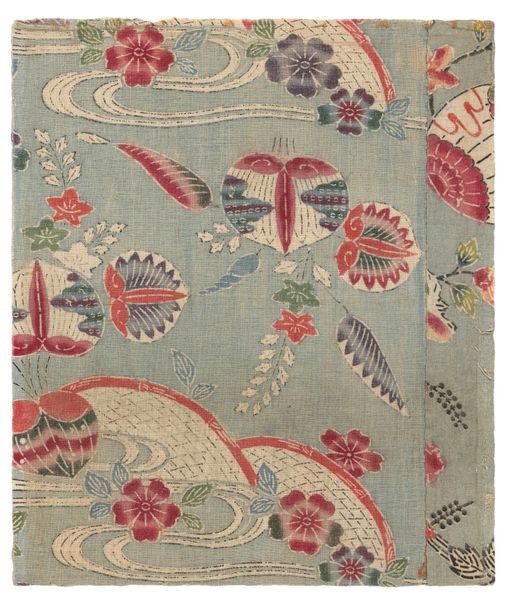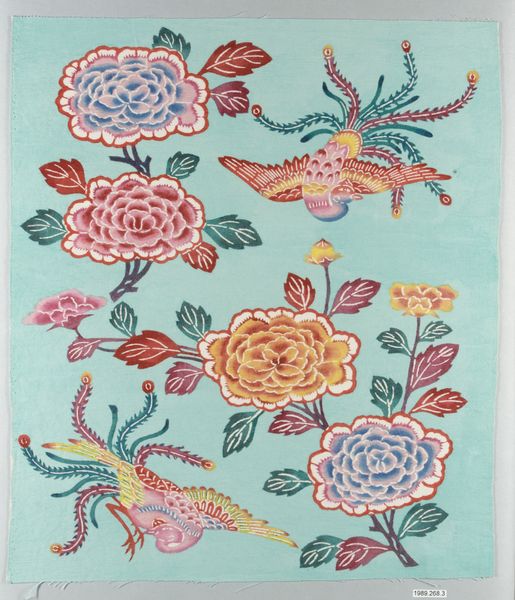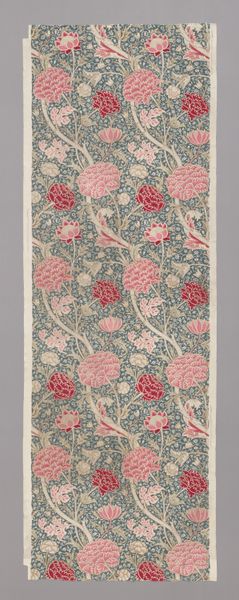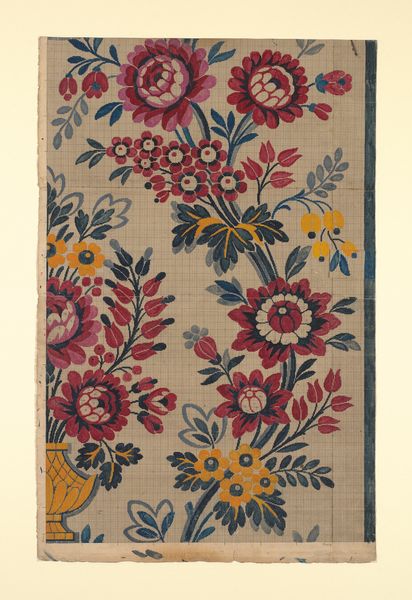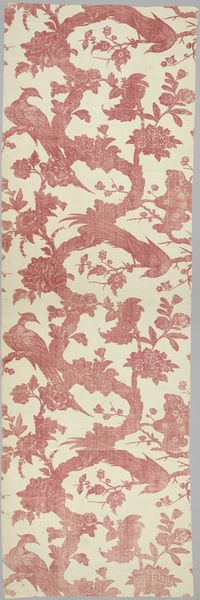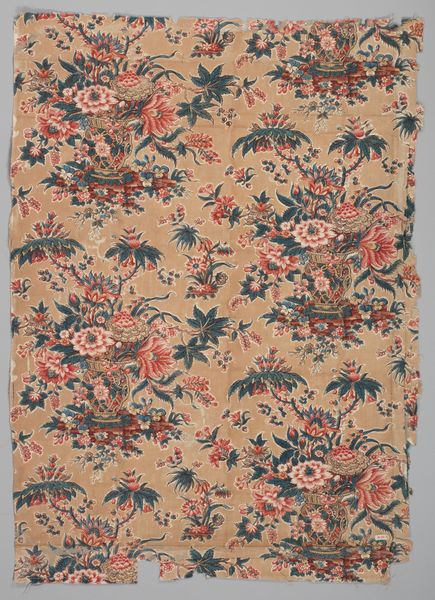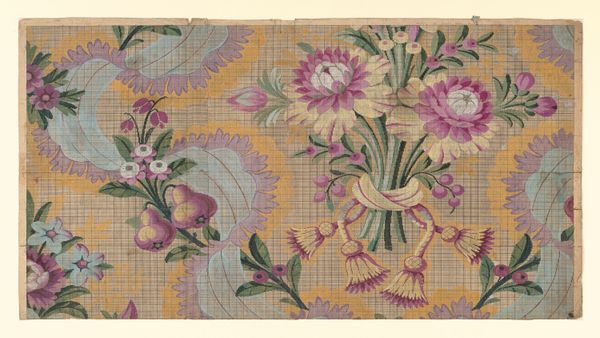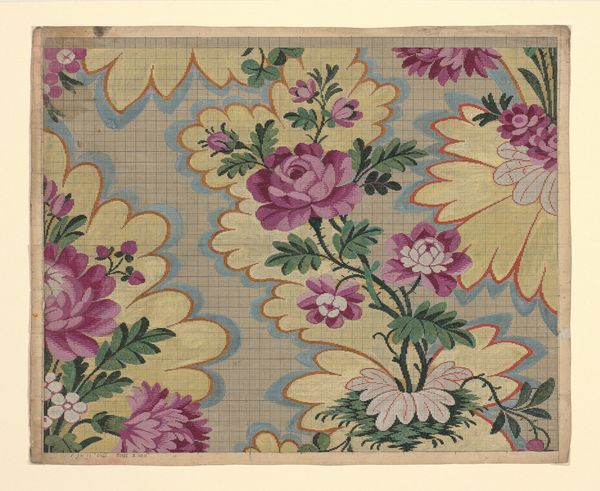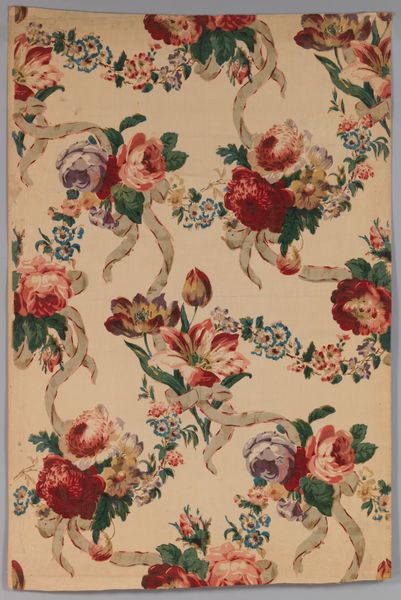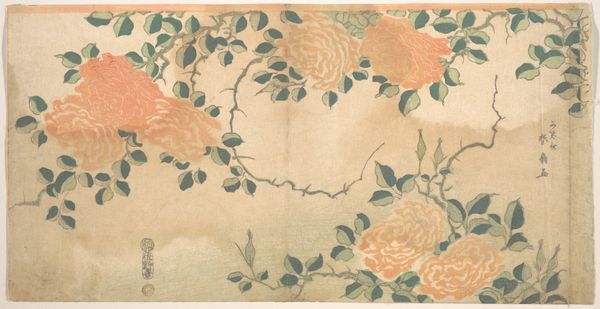
silk, weaving, textile
#
natural stone pattern
#
naturalistic pattern
#
organic
#
silk
#
pattern
#
asian-art
#
weaving
#
textile
#
ukiyo-e
#
fashion and textile design
#
japan
#
hand-embroidered
#
pattern background
#
organic pattern
#
orientalism
#
pattern repetition
#
textile design
#
imprinted textile
#
layered pattern
Dimensions: 25 1/2 × 12 1/4 in. (64.77 × 31.12 cm) (overall)
Copyright: Public Domain
Editor: This is a Fragment decorated with florals from around the 19th century, artist unknown. It's a textile, likely silk, a beautiful woven piece. I'm immediately drawn to the delicate balance of the floral patterns with the birds. How do you interpret this work in its historical context? Curator: Considering this textile's presumed 19th-century origin, and given its current location in the Minneapolis Institute of Art, we should investigate its role within the art market of that time and the Western fascination with 'Orientalism'. The floral motifs, along with the bird imagery and what seems to be stylized fans, point towards a possible Japanese influence, maybe connected to the Ukiyo-e movement that heavily influenced textile design. This piece was clearly intended for display or use by an elite clientele. Is this a commercial sample destined for Western markets? What impact would it have in American or European collections at the time? Editor: That makes me wonder if the fragmentation is evidence of its journey through various owners or purposes? Curator: Precisely! The condition of the fragment and its journey here speaks volumes. Was it displayed as art or used for fashion? Perhaps a source of inspiration for Western artists and designers who absorbed and reimagined its aesthetic? Furthermore, analyzing museum acquisition records could offer valuable insight into how and why it came to be viewed as a worthy cultural artifact. What aspects strike you most, given this added historical perspective? Editor: I now see it less as a simple pretty pattern, and more as a window into cross-cultural exchange and the art market's role in shaping our understanding of different cultures. Thanks. Curator: It is important to always ask: Whose stories are privileged by the museum and what biases may be evident in the interpretation of non-Western art? We must remain critical in assessing the textile as a product of a dynamic global exchange.
Comments
No comments
Be the first to comment and join the conversation on the ultimate creative platform.
